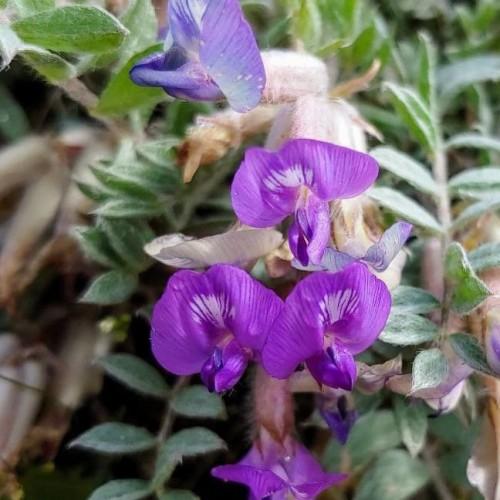
Bent Flowered Milk Vetch
Astragalus vexilliflexus var. vexilliflexus
Watering:
Minimal
Hardiness Zone:
Sun:
full sun,part shade
Leaf:
Yes
Growth Rate:
Low
Drought Tolerant:
Yes
Salt Tolerant:
Yes
Care Level:
Medium
watering
Looseflower Milkvetch (Astragalus tenellus) is a drought-tolerant plant requiring minimal water once established. During the growing season, water the plant deeply once per week, providing enough to moisten the soil to a depth of 8-10 inches (20-25 cm). Avoid frequent light watering, as this may encourage shallow roots. During extremely hot, dry weather, consider watering twice per week. In the winter, when the soil is very wet, reduce watering down to once every 2 weeks. To keep the plant healthy, water it deeply to help promote strong roots.
sunlight
Looseflower Milkvetch (Astragalus tenellus) requires 6-8 hours of direct sunlight a day, with allowance made for partial shade during the hottest parts of the day. It grows best in hardiness zones 3-9 and in full sun locations. The plant is drought-tolerant and can thrive in hot temperatures, so it does not need daily watering. It is recommended to water the plant weekly during hot summers or twice a week during periods of prolonged drought. Due to its drought-resistant nature, Looseflower Milkvetch does not need much in regards to supplemental watering.
pruning
Pruning for Looseflower Milkvetch should be done at the end of the summer, once it has finished blooming, to keep it neat. Pruning should be done judiciously and sparingly, as this plant species is usually low maintenance and will not require much pruning if grown in an ideal location. If grown in overly crowded or unsightly areas, it might need more pruning to keep it looking its best. You should only remove branches or flower stalks that are dead, broken, or are crowding the plant. Cut back any excess stem or foliage growth to keep it within the desired proportions, and cut just above a leaf node or a branching cluster.
